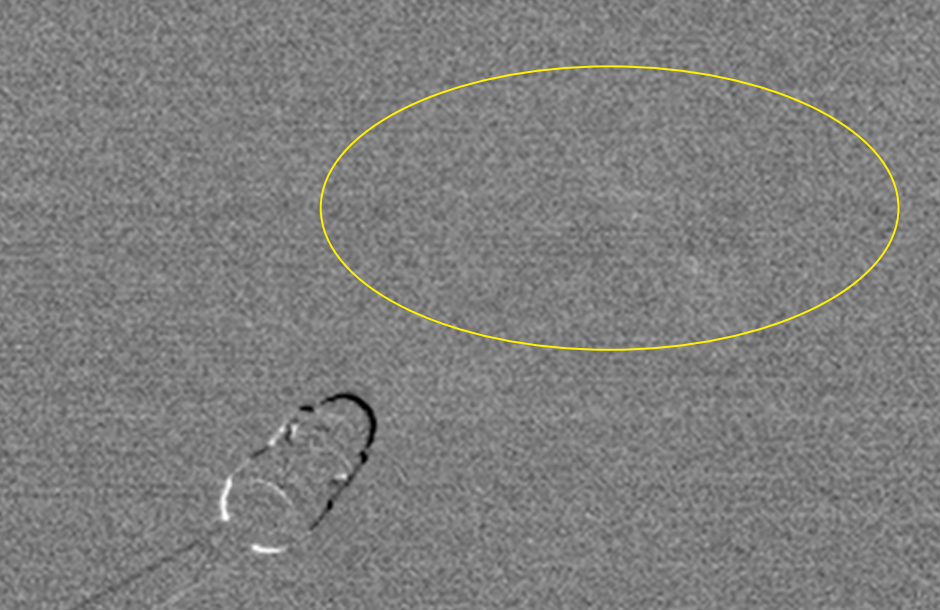Detection of ammonia leak in laboratory conditions using a FLIR 306 camera and a portable gas detector
DOI:
https://doi.org/10.5604/01.3001.0014.3703Keywords:
thermal imaging, infrared, gas detection, ammoniaAbstract
The study aimed to analyse detection methods of ammonia leakage by various electrical methods. Rapid detection of the escape of hazardous technical gases is extremely important in large chemical plants. The basis of the research was the use of a specialized camera, model FLIR GF306, to detect a leak of selected gases in a narrow infrared band. In laboratory conditions, the controlled emission of gaseous ammonia at various concentrations was simulated, and gas detection was performed: a) using a narrow infrared thermography method, and b) by a portable electrochemical detector dedicated to detecting ammonia. The turbulent flow of gas into the environment and high thermal contrast between the expanding gas and the background are the conditions for effective gas detection with a thermal imaging camera operating in a narrow infrared band.
Downloads
References
Adefila K, Yan Y, Wang T. Leakage detection of gaseous CO₂ through thermal imaging. 2015 IEEE International Instrumentation and Measurement Technology Conference (I2MTC) Proceedings; 2015 May 11-14; Pisa, Italy. IEEE; 2015, pp. 261-265, doi: https://doi.org/10.1109/I2MTC34403.2015. Google Scholar
Singh AK, Pandey A, Chakrabarti P. Poly[2,5-bis(3-tetradecylthiophen-2-yl) thieno [3,2-b] thiophene] Organic Polymer Based-Interdigitated Channel Enabled Thin Film Transistor for Detection of Selective Low ppm Ammonia Sensing at 25°C. IEEE Sensors Journal. 2020;20(8):4047-4055. doi: https://doi.org/10.1109/JSEN.2019.2963269. Google Scholar
Feynman RP, Leighton RB, Sands M, Gottlieb MA, Pfeiffer R. The Feynman Lectures on Physics. California Institute of Technology, 2013. https://www.feynmanlectures.caltech.edu/I_toc.html (accessed 31.08.2020) Google Scholar
Gawędzki W. Pomiary Elektryczne Wielkości Nieelektrycznych. Kraków: Wyd. AGH; 2010. Google Scholar
Więcek B, Pacholski K. Termowizja i spektrometria w podczerwieni, zastosowania przemysłowe. Warszawa: PWN SA; 2017. Google Scholar
Catalogue: Infrared cameras for gas detection, Flir GF306. https://flir.netx.net/file/asset/8496/original. (accessed 31.08.2020). Google Scholar
Knapek J. Kamery termowizyjne do optycznego wykrywania wycieków gazów. Kraków; 2019. (unpublished materials of the EC-TEST SYSTEM company). Google Scholar
Lisowska-Lis A. Thermographic monitoring of the power transformers. Measurement Automation Monitoring. 2017;63(4):154-157. Google Scholar
Lisowska-Lis A, Witos F, Szerszeń G. Thermographic analysis of power oil transformer surface hot spot areas combined with analysis of acoustic signals recorded on line. Proceeding Volume 11204, 14th Conference on Integrated Optics: Sensors, Sensing Structures, and Methods, 112040B (2019); 2019 Feb 25 – Mar 1; Szczyrk-Gliwice, Poland. SPIE; 2019. doi: https://doi.org/10.1117/12.2536700. Google Scholar
Catalogue: Inspire Analytical Systems. Gas detectors HOVA. https://hovacal.de (accessed 31.08.2020). Google Scholar
Catalogue: “Gas detector: GasAlert Extreme Ammonia Gas Detector”. https://www.honeywellanalytics.com/~/media/honeywell-analytics/products/gasalert-extreme/documents/gasalert-extreme-user-manual.pdf?la=en (accessed 31.08.2020). Google Scholar

Downloads
Published
How to Cite
Issue
Section
License
Copyright (c) 2020 University of Applied Sciences in Tarnow, Poland & Authors

This work is licensed under a Creative Commons Attribution-NonCommercial 4.0 International License.



